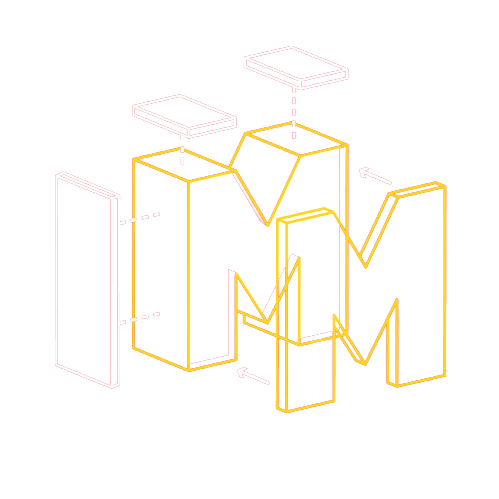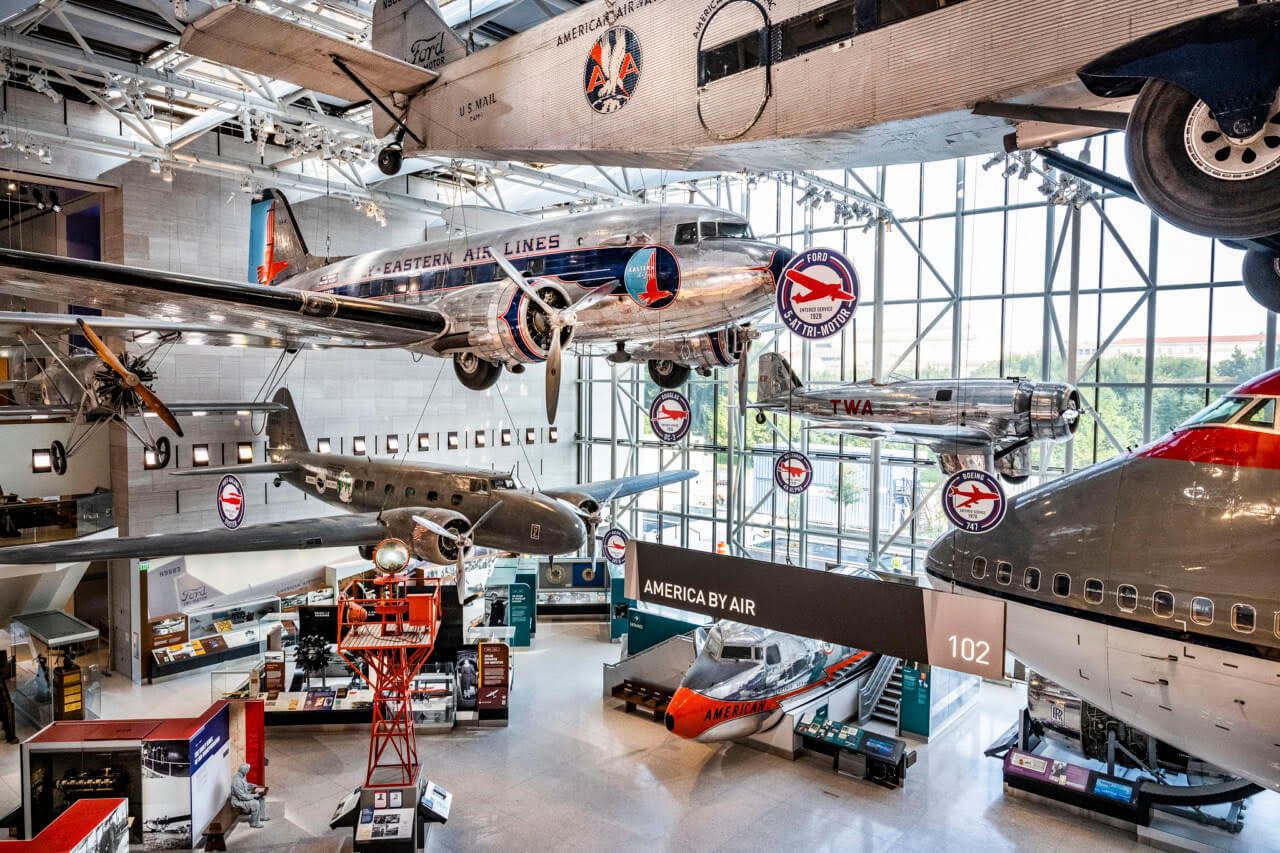
On the 24th of February , 2024, me and other scholar members went to the National Air and Space Museum, exploring three different exhibits on display. They were One World Connected, Destination Moon, and Exploring the Planets, followed in that specific order. So as me and my friend walked the exhibits together, we would take notes on the specific displays up, the type of information conveyed, how interactive they were, and more that pertained to not only the info portrayed but also the visitor experience as well. With these self-guided tours, we saw not only how different fields of science are portrayed to the general public, but also the differences and similarities in between museums and how they portray info.
First we started with the One World Connected exhibit, going through the history of communication and logistics that have facilitated globalization and connected us all to each other. Some of the fields of science and technology portrayed in this portion of the museum included radios, radar, and sonar, logistical planning, and imaging for climate change effects. Now specifically, these fields of science were portrayed by different concepts, discoveries, and inventions. Such as with the radio, there was a portion of the exhibit that had a display of the evolution of radios and their uses in war and travel...
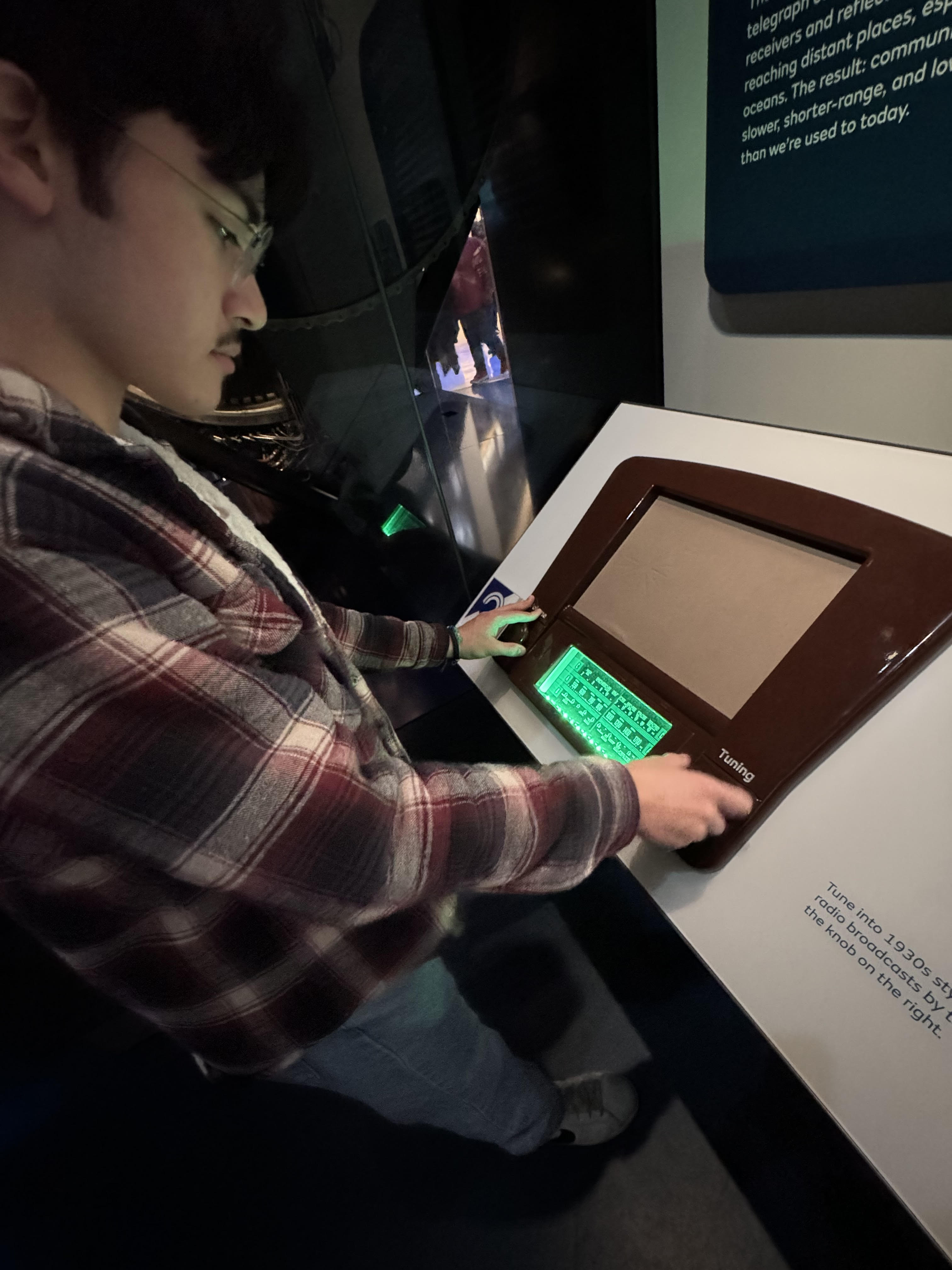
A model of an old radio dial was shown, where a visitor could tune it to the channel needed to hear something. Advancements in airplane technology were also shown, such as with the creation of the jet engine in 1952 with the de Havilland...
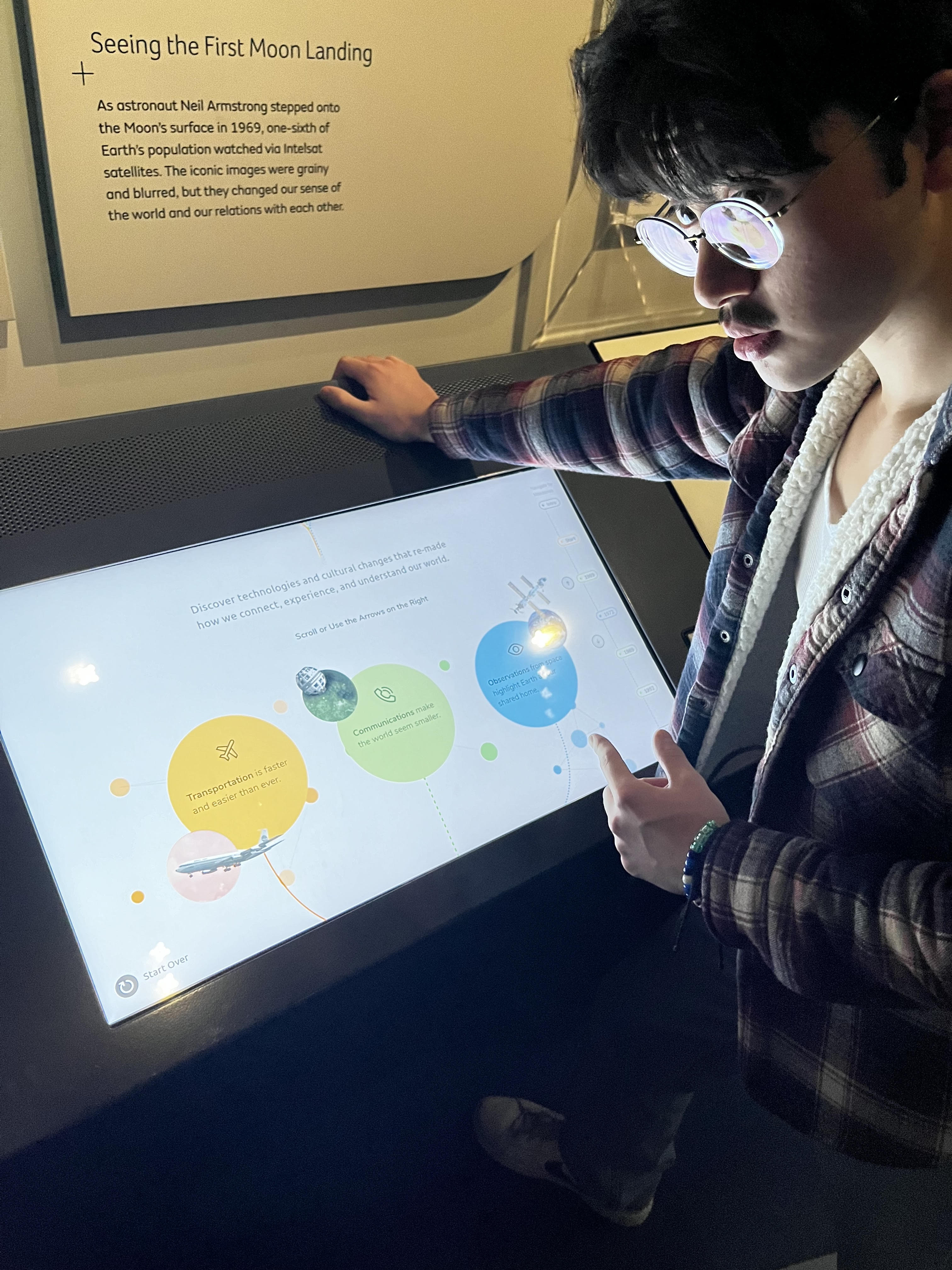
This piece of info was shown by an interactive screen that showed a timeline of airplane travel. Finally, one last technology on display was the color camera used on the Aerobee rocket, which was used to capture millions of miles of the Earth...
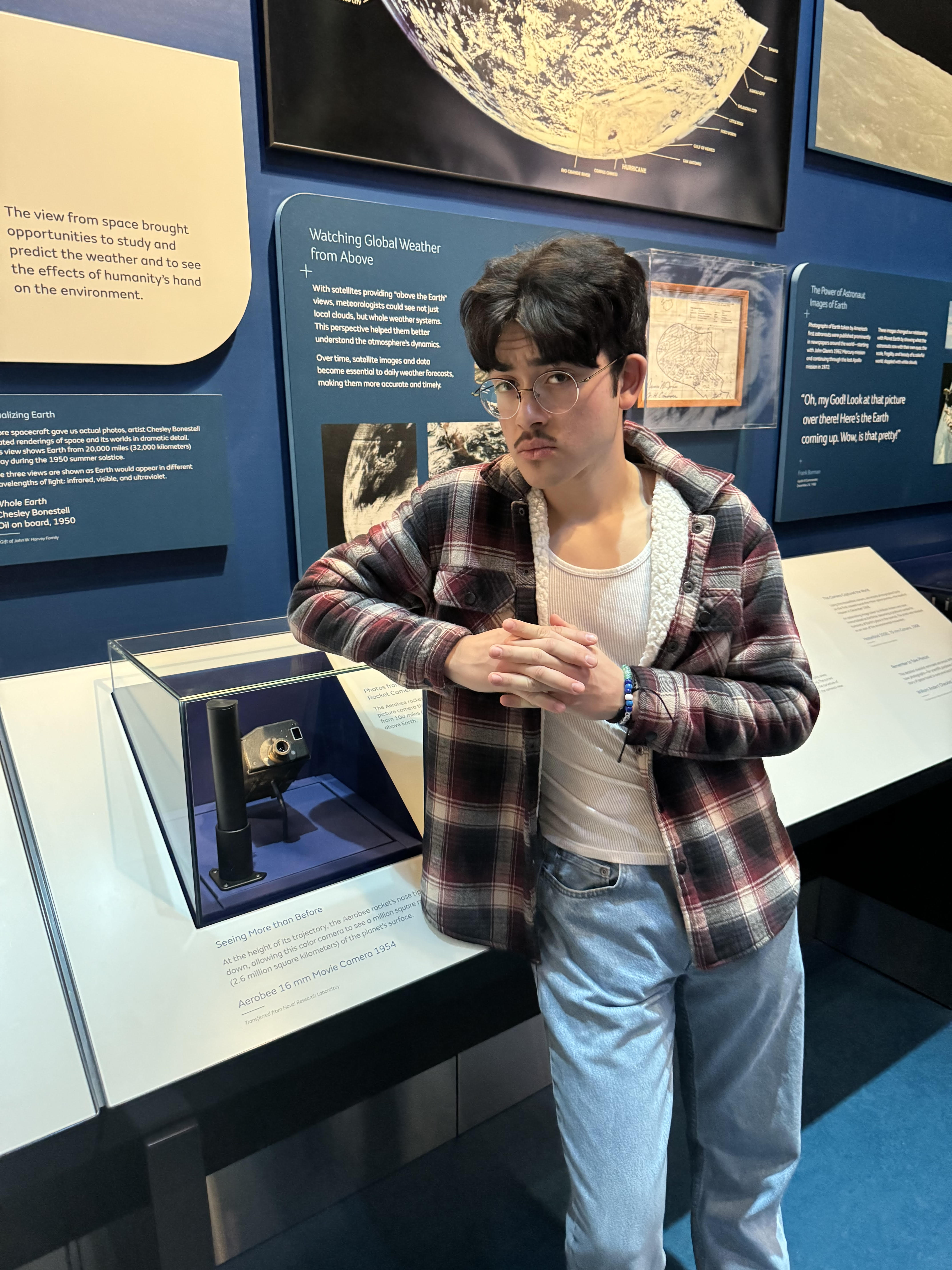
The camera model was on display for visitors to see. For me, the whole display seemed to be equally aimed at children and adults alike, seeing that both groups had enough information and displays to keep them entertained. For example, the amount of interactive displays in this exhibits hinted at the target audience being children, such as the aforementioned radio dial, the screens, and models that could be touched. But also the displays were very much informative for adult audiences as well which had much more complex infocards. So are they effective? Honestly I would say yes, working well for both groups as its entertaining enough and informative enough for young and old, but not too informative or too uninformative. One way that the exhibit designers tried to make complex concepts in aviation and space flight more digestible was by relating them to visitors through everyday objects and actions. Such as with the international call display...
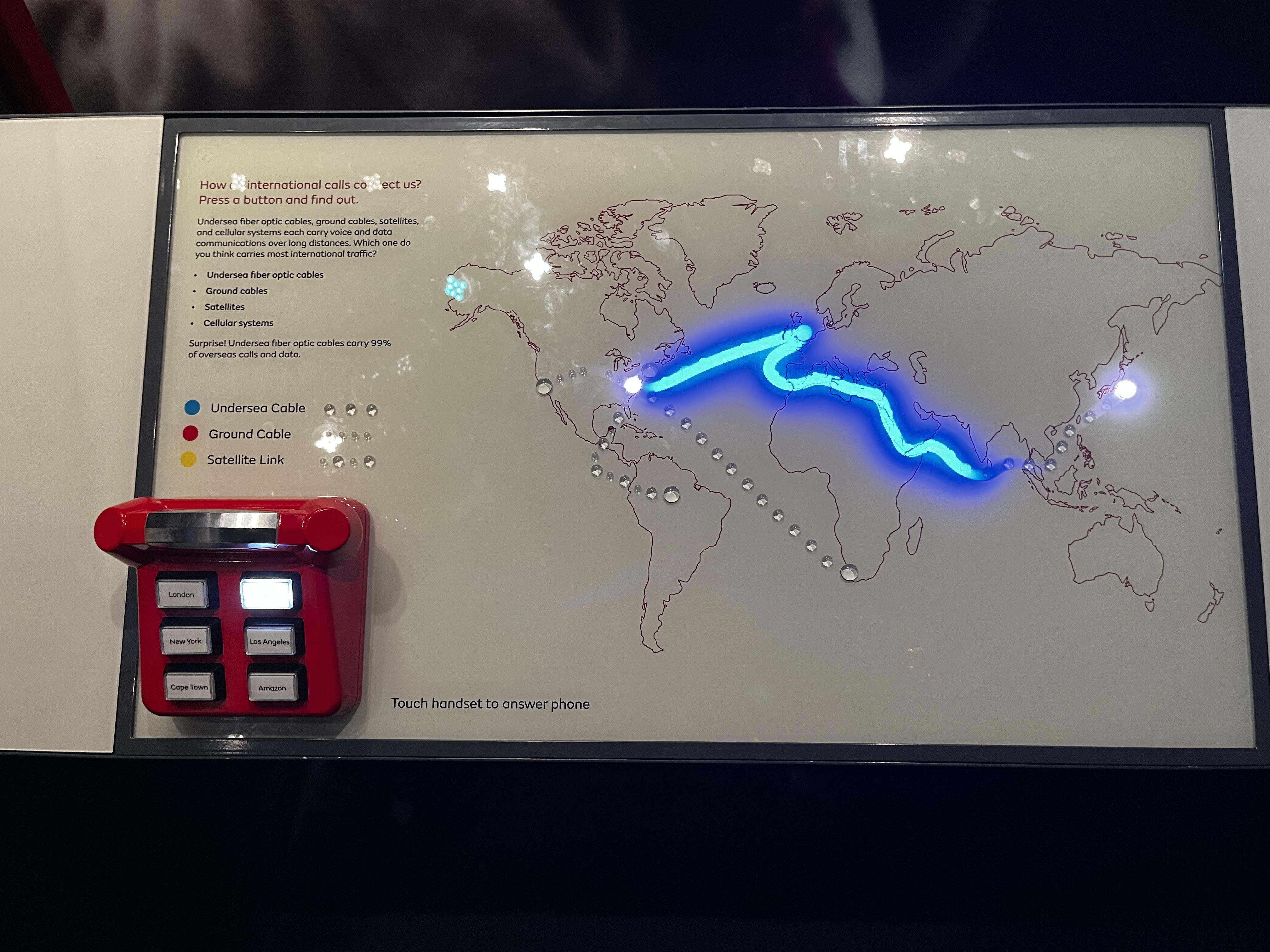
that shows how complex technologies like underground cables, grids, and satellites connect us around the world. All in all, the One World Connected exhibit really summarized the complex relations in communication and logistics into an understandable format for all.
The second exhibit we visited was Destination Moon, a whole walkthrough of the enthusiasm and the missions going to the moon and experimenting in space. Some fields of science shown include astronomy, thermodynamics, and geology. These fields were displayed in multiple ways across the whole exhibit, such as the concepts of liquid fuels and flash powder being shown...
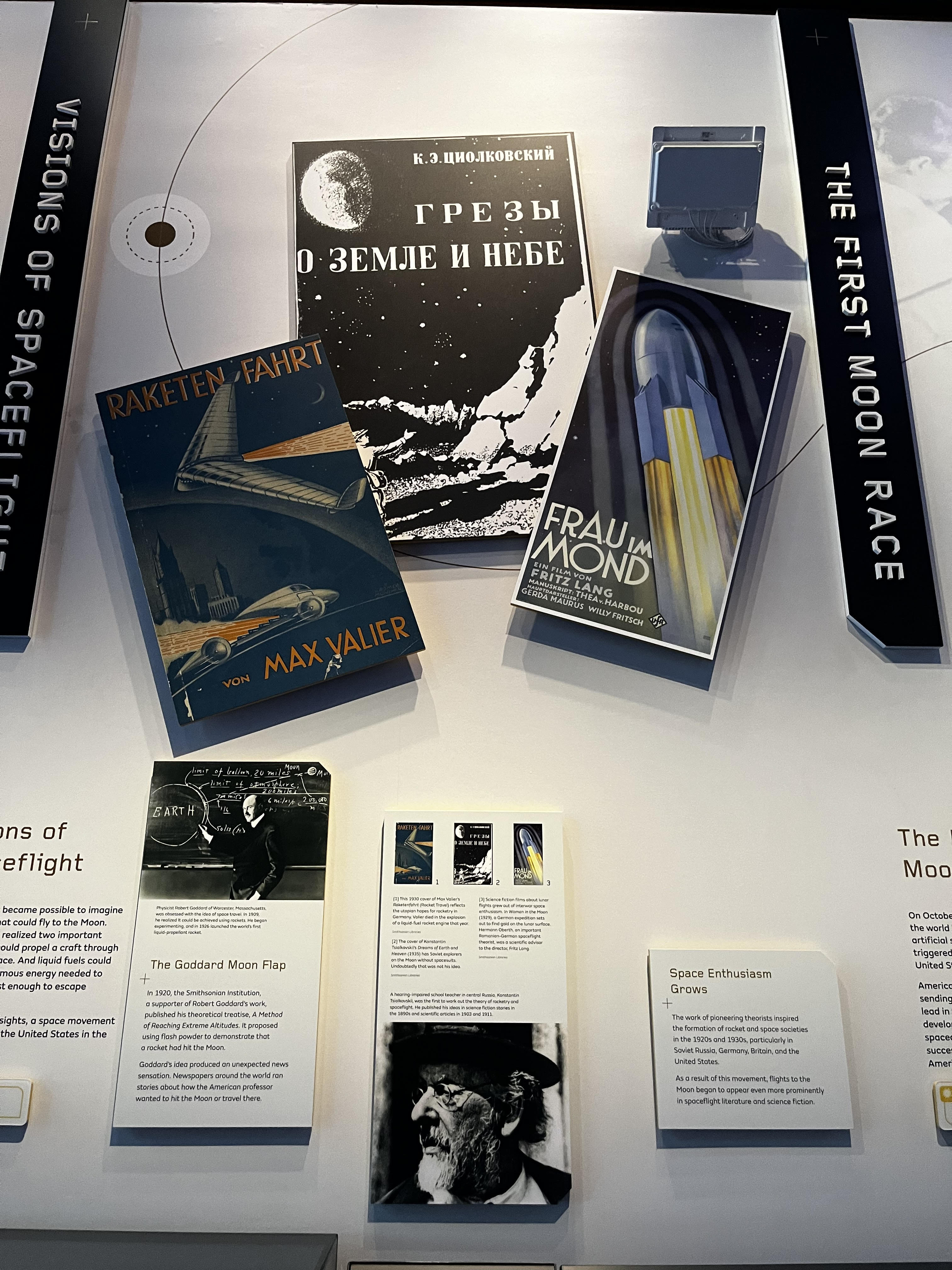
as revolutionary advancements that allowed for rockets to come into existence. These advancements were presented using news articles from the past that showed just how excited people were about the prospect of spaceflight. Also, spacesuits as a new technology allowed for manned missions into space and allowed the US to land the first man on the moon.

Throughout the whole exhibit, there were prototypes, boots, gloves, and even an entire floor showing the evolution of spacesuits. Finally, heat shielding was shown as another important technology that helped protect astronauts in their launches and touchdowns. These important layers were shown not only in physical models but also in the cabins and doors on display. This exhibit was less interactive than the One World Connected exhibit, feeling more like an all age-appropriate exhibit and not one aimed towards children more. Sure there were a lot of cool models for kids, but it felt as if you were meant to walk around and read the information instead of playing with it instead. There were a few interactive displays, such as replicas of spacesuits that one could compare their hands to, interactive touch screens, and learning about the dark side of the moon. They were interesting additions to the exhibit, but it felt like they didn’t add too much as the actual information presented was more informative than the interactive displays. Designers here managed to fit the whole exhibit into a small cramped space but also in a chronological order, which was smart. Starting with the origins of our fascination with the moon, we saw advancements in tech that gave us the ability and motivation to land on the moon...
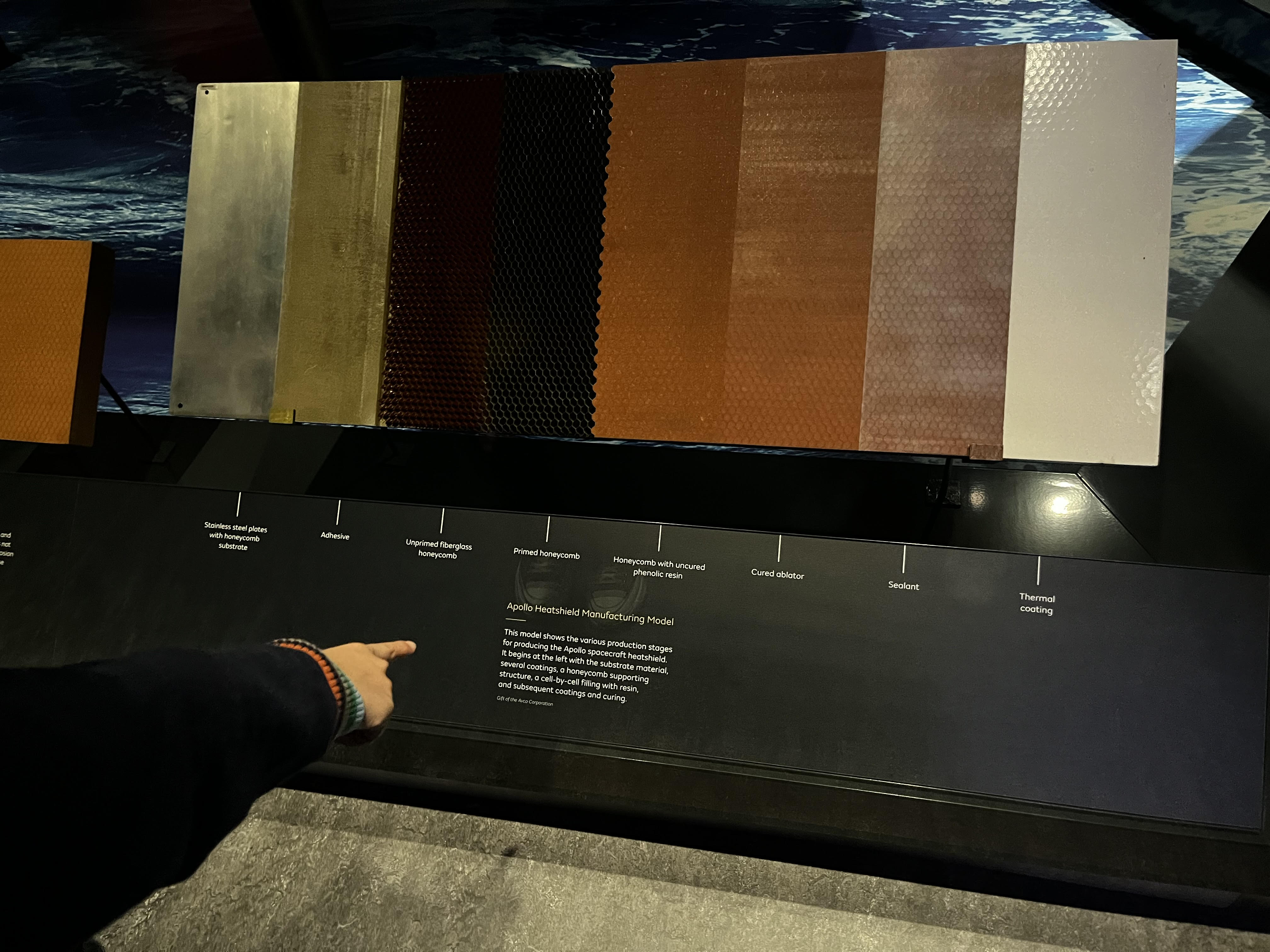
Would it be easy to change this information? Yes, because the chronology of moon fascination and travel is set in history, only small bits of information would be outdated but they’re easily changed. So, the Destination Moon exhibit really does show how humans have managed to bring their fantasies to life.
The final exhibit was the Exploring the Planets going through the different planets in the solar system and their different characteristics. Science topics explored included astronomy, exoplanets, radiation, and more. And some of the science topics were portrayed in actual concepts and technologies like the Kepler telescope...
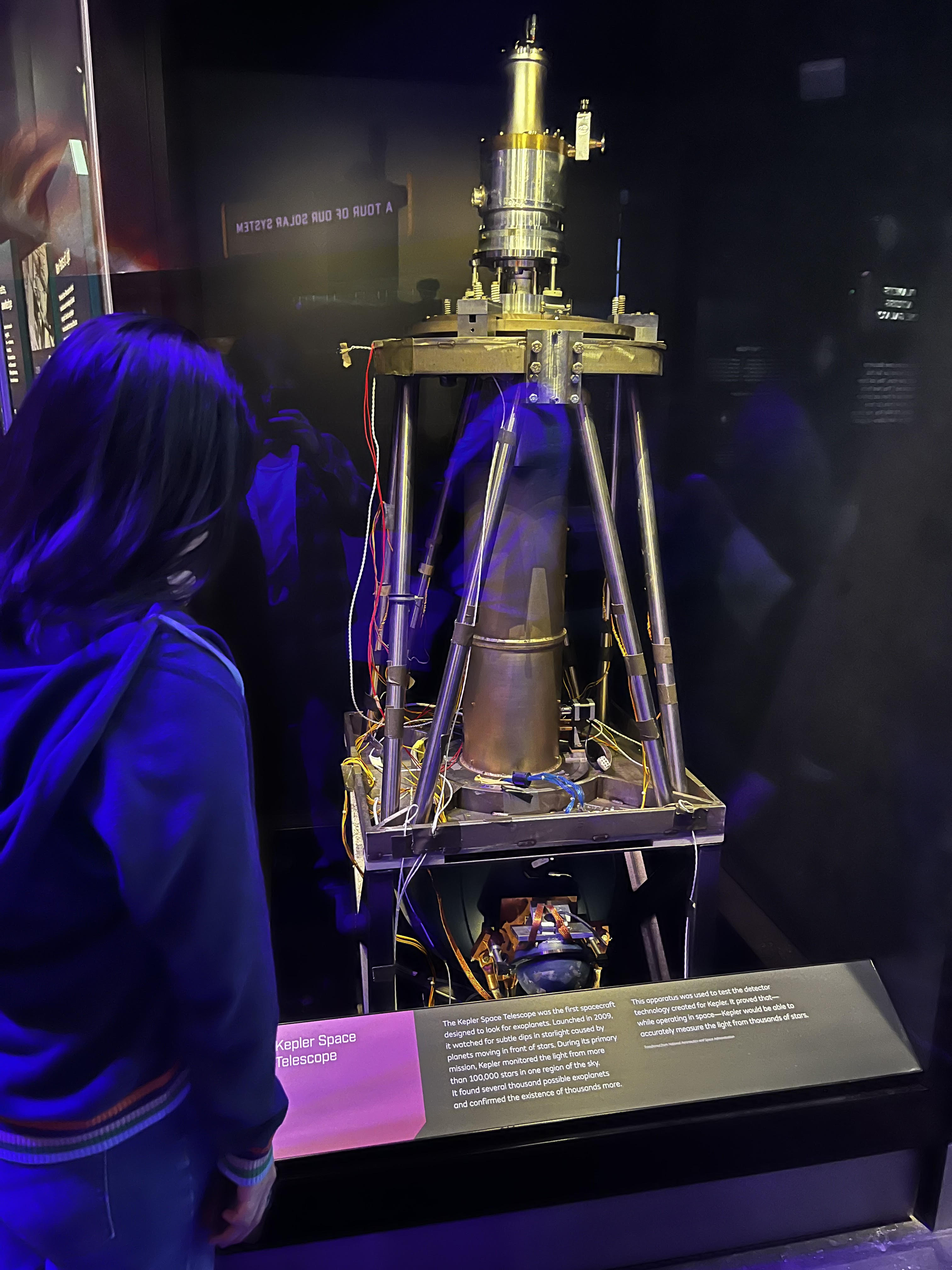
the first telescope to spot exoplanets using the solar wobble method. A model was on display of the Kepler telescope, showing people what parts were on the telescope and how they worked together. Another technology shown were mariners, which changed our views of different planets like Mars...
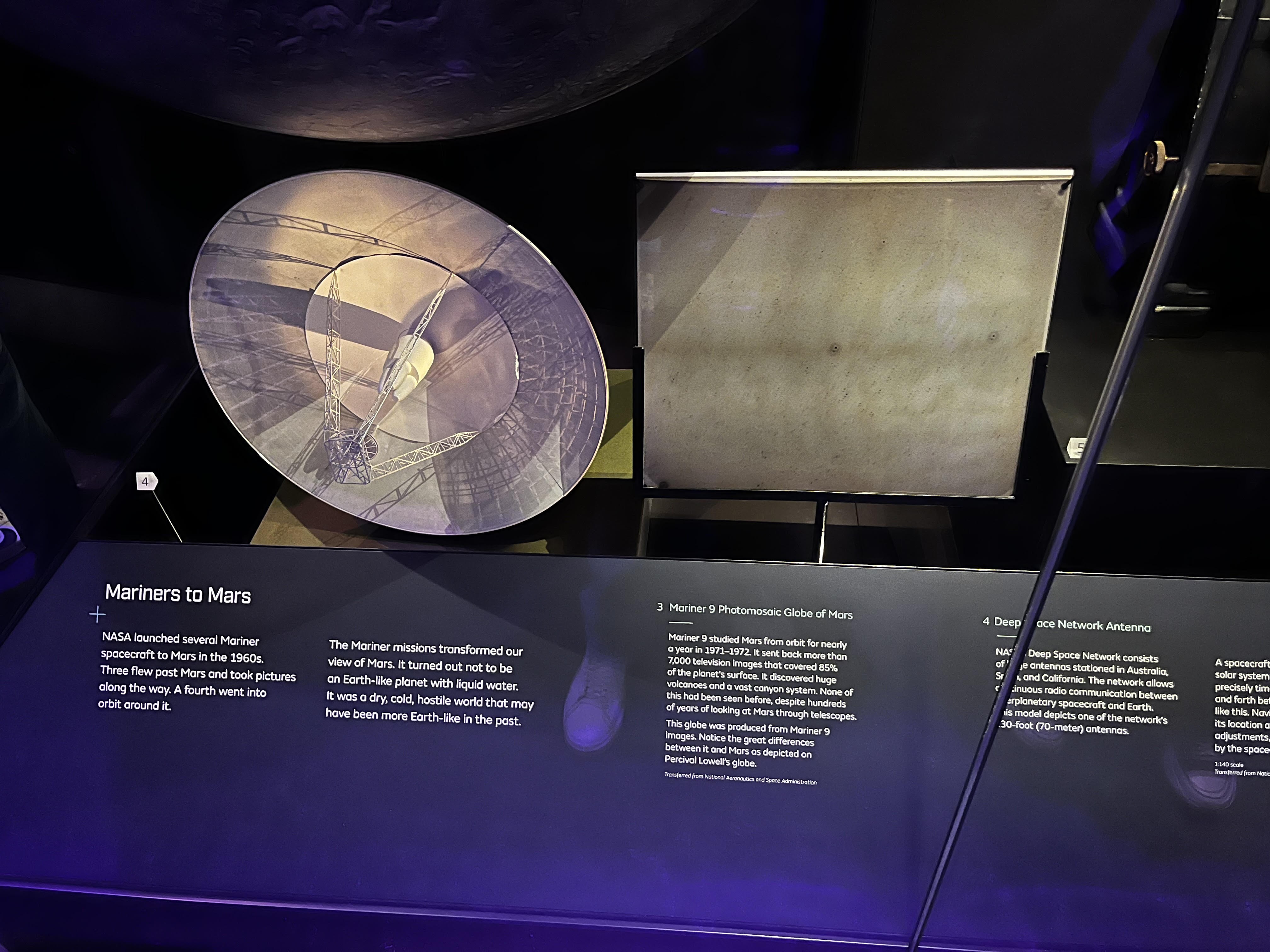
showing to be more hostile than previously thought. There were scale models of mariners on display along with how they worked around Mars, giving visitors an idea of how we got some info about Mars today. And finally another concept shown were plate tectonics, which helped us understand not only how our planet formed but also how other planets formed as well. Information on the plate tectonics was portrayed on a panel...
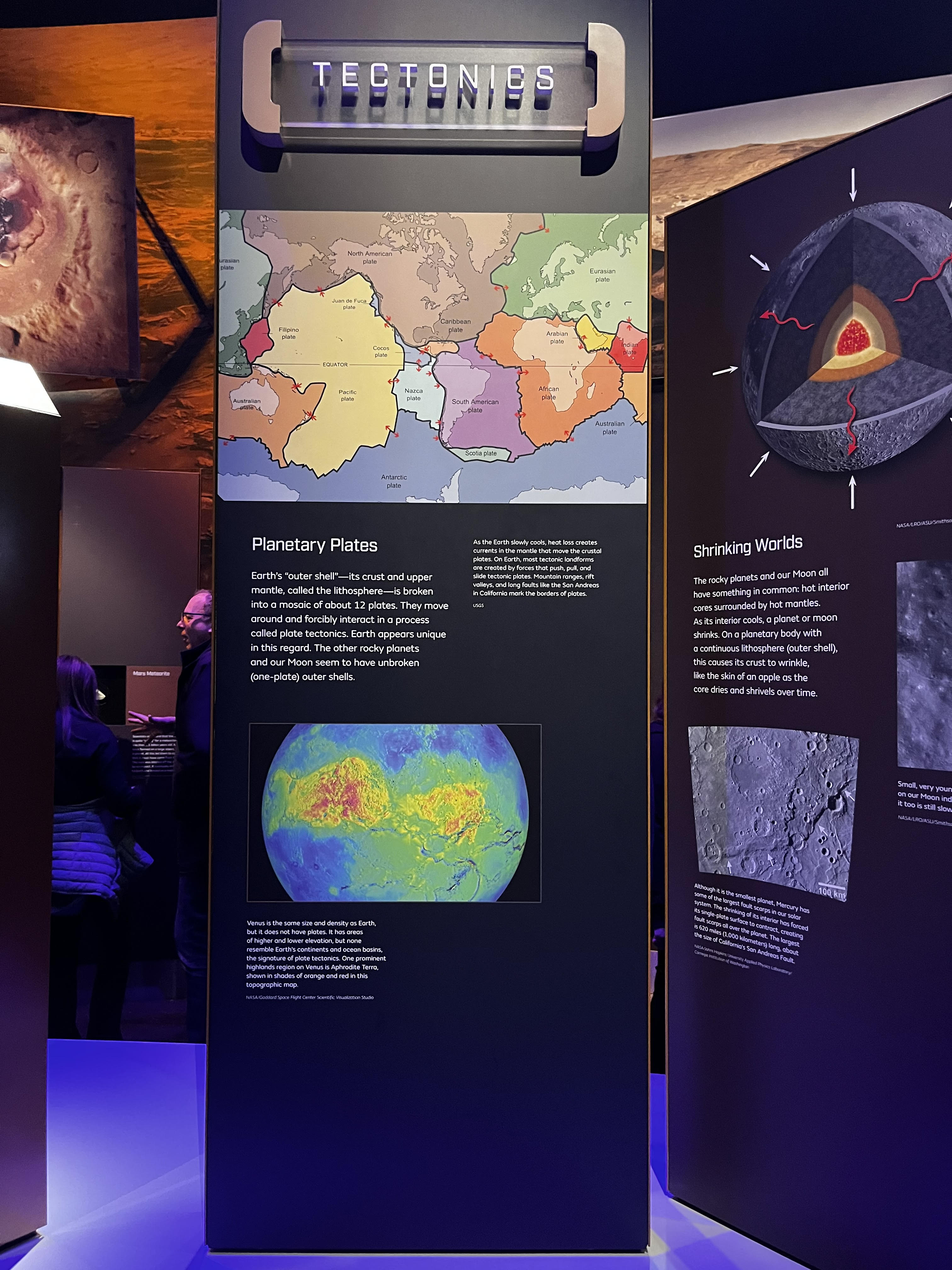
given a whole section on how they work. This exhibit really lacked interactive displays, only having one portion in the middle with a projector that was like a mini-theater for kids. Other displays like cool planet models were also catered towards younger audiences, but the lack of interactive displays made me think that the exhibit was supposed to be for all, but there wasn’t much balance between younger audiences and older audiences. How did designers layout this exhibit? The floors had markers that showed the orbital distance of every planet in the solar system. Not only that but the exhibit was organized into not only separate planets but also split between the gas giants and terrestrial planets.
Coming back from all three tours, we came back to campus with a newfound knowledge of not only the history and science behind aviation and astronomy, but also the specific technologies that go into allowing us to make discoveries like these represented in the NASM.



